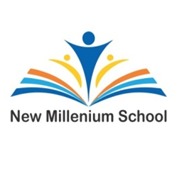NMERC (Research & Development)
Why NMERC ?(NEW MILLENNIUM EDUCATION & RESERCH CENTRE )
Years of research and deliberation has led to the formation of a novel approach to education called the New Millennium Education & Research centre . The central idea is to create a space for children where they can innovate, experience and evolve in their unique ways. Away from the conventional system, our model is based on placing the child at the centre of his or her learning. Our methodology follows three basic and overlapping streams called Realities, Humanities and IdentitiesInstead of alienating the student from his/her environment we lay stress on A. Building basics of all subjects and B. Ensuring that the linkages between them are established for life. The fundamental idea of the NMES is to create a dynamic grid in the personalities of the students.
Field of knowledge
Realities
Realities are the field of knowledge concerned with the core fundamentals of our world. It comprises of the Sciences, Geography, Mathematics and Environmental Education. The central aim of realities is to introduce the child to the building blocks of our world. We wish to inculcate a scientific temper in our children.An introduction to the realities under our system will give the child a holistic and complete picture. Science and Mathematics will become a child’s friend when they embark on the joyous journey of learning, paved with curiosity and amazement. The questions they will learn to ask under this stream will ensure that instead of feeling alienated from the realities, they will understand how the grand design of the world operates.
Realities are a large field and can create fissures between different subjects. Our aim is to ensure that Chemistry, Mathematics , Physics and Geography etc. are all inter-connected and are to be used in an integrated manner to quench the curiosity of a child’s mind. In other words, Realities are the basic building blocks of our world and it is pertinent that a child grasps the philosophies and practices of this wonderful stream in an eclectic manner.
Let’s take an example of teaching in this field. This will throw further light on our approach: We lay emphasis on using both formal and non-formal tools for teaching.
- Formal- It includes all the traditional academic (course) contents
- Non- formal- It includes the often ignored but very important aspects of the subject, which is essential for the holistic education
Example
Mathematical Sciences
Formal: Contents of course books and reference booksNon- formal:It includes History of mathematics
- Ancient mathematics Vs Modern mathematics
- From where Mathematical Sciences has originated?
- Mathematics through ages
- Origin of zero
- Mathematicians of world
- Aryabhatt’s contribution to mathematics
- Different forms like abacus
- Many more
Humanities
Humanities is the stream which simply stating- makes us human beings. The joys of languages, the wisdom of History, the civic knowledge of Political Science, the profound insights of Sociology and Moral Science are the core features of this area. In a similar vain to Realities, Humanities also is a dynamic amalgamation of the aforementioned subjects. The ties between History and Languages, the relationship between Sociology and Political Science etc. are established in a child’s mind at an early age. The child warms up to the sheer genius of the Humans Story and achievement, and uses the pillars of Humanities to make sense of the Global World he/she inhabits.We strive to ensure that the child asks us questions like: How does language work? How did it evolve? How is Indian History connected to the way our society has evolved? What is the function of Political Science in a Globalised World?
Identities
We believe while Realities and Humanities are the core reservoir of knowledge for a child, they will remain incomplete without the ability of expression. Identities is the most sophisticated area of NMES and we pay special attention to this field. We value above everything the beauty of a child’s expression. It is the most thrilling aspect of a teacher-student relationship when a young child expresses through creativity and imagination. A small poem they recite or a crooked line they might draw at a young age could be baby-steps towards a grander expression of genius at a later age.This stream has two broad divisions: Fine Arts and Performing Arts. Under qualified teachers children are offered motley of avenues ranging from Painting to Indian Classical Dances. We identify the leanings of a child very early and encourage them to use their favored medium to express their artistic imagination.
We use the vistas of theatre groups, painting competitions, poetry recitations and dance training camps to create an atmosphere conducive to expression and creativity. The skills which a child attains through these activities are extremely important for their future lives.. These exercises engulf them in the rich traditions of Indian and World Cultures and again, empower them as future Global Citizens. All in all, Humanities is crucial for building of the personalities of our children and indispensable to them becoming truly Global Citizens.
